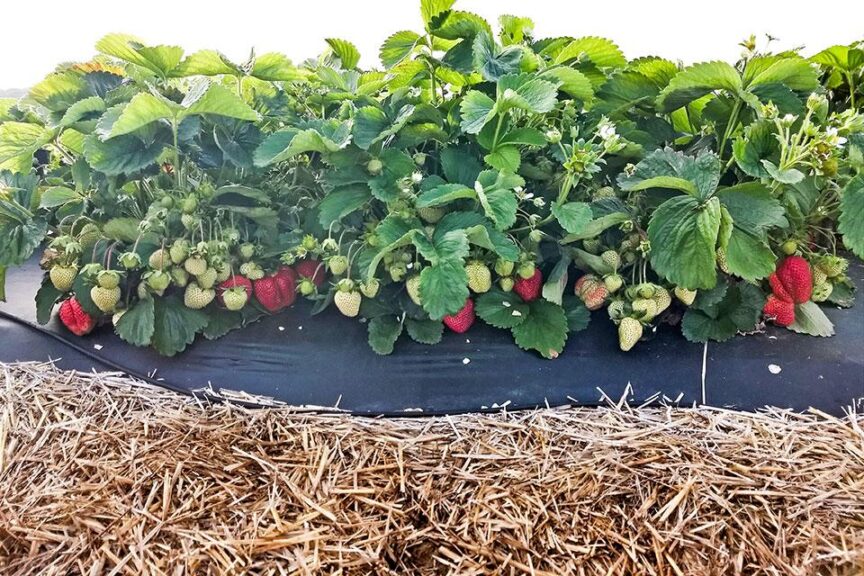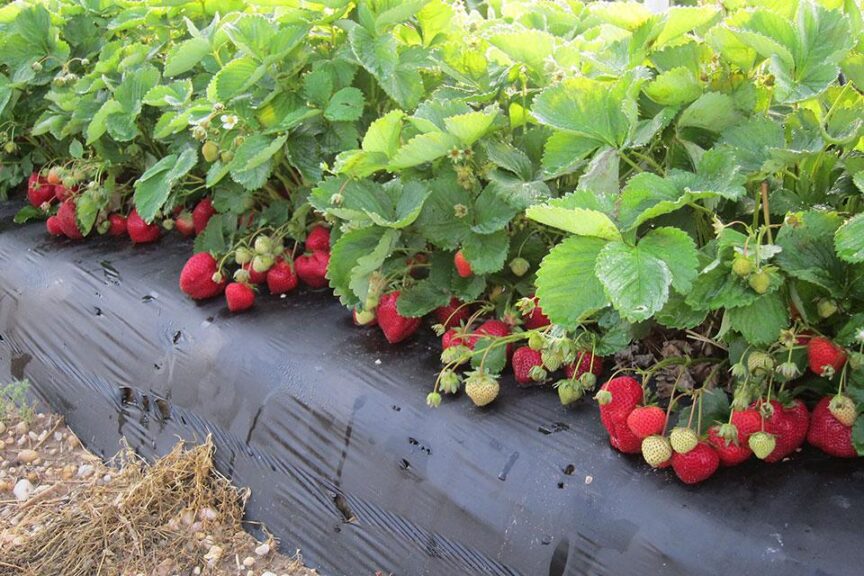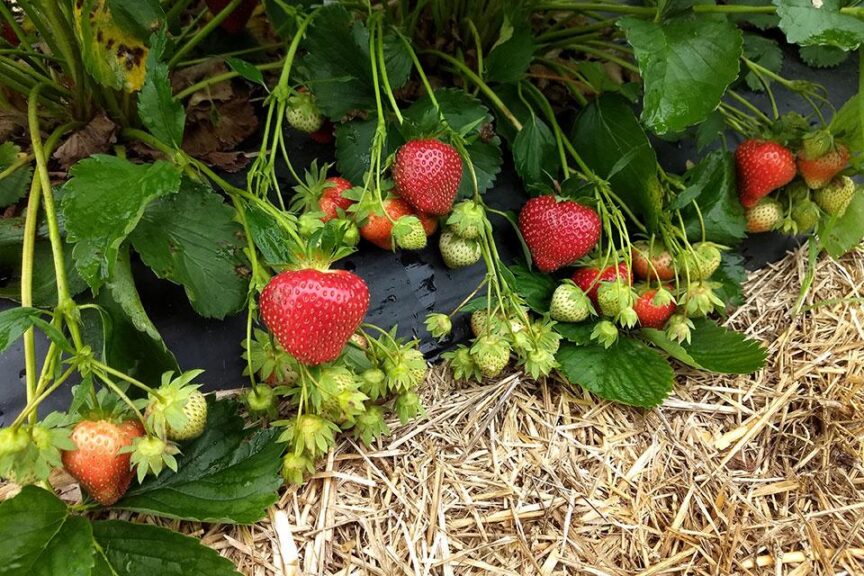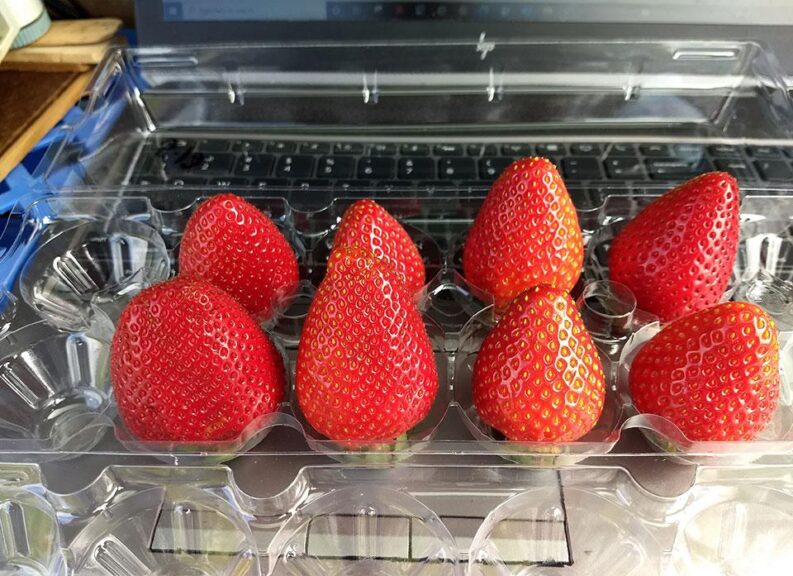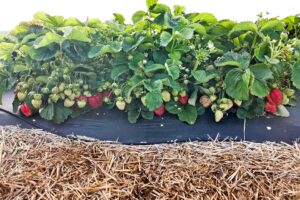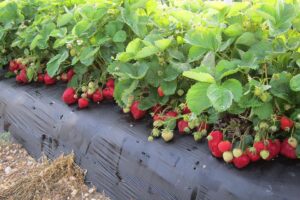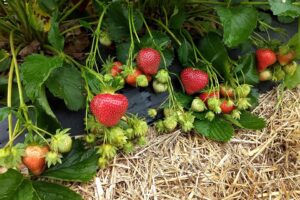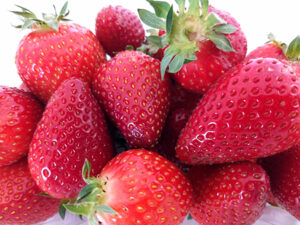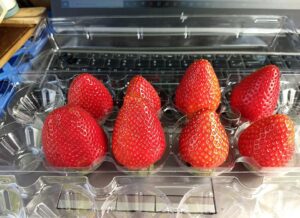4 Emerging Strawberry Cultivars That Have Bright Futures
When soft fruit breeder Kim Lewers talks about strawberries, her face lights up like one of her favorite new cultivars. “One thing I really love about ‘Lumina’ — it’s what I named it for — is its bright color and its high gloss,” Lewers says of the early-season strawberry cultivar. “It’s 1.5 times glossier than the average of all the genotypes I’ve tested.”
Lewers, a Research Plant Geneticist with USDA-ARS, has seen her share of genotypes, cultivars, and varieties during 23 years with the Beltsville Agricultural Research Center in Maryland. Her department, the Genetic Improvement for Fruits and Vegetables Laboratory, develops improved cultivars of strawberry, blueberry, cranberry, potato, tomato, and pepper.
‘Lumina’ is one of those strawberry cultivars, several of which Lewers highlighted while speaking at the Mid-Atlantic Fruit and Vegetable Convention in Hershey, PA. The cultivar was approved for release in 2023 and will soon be patented. Distribution during the life of the patent is limited to requestors licensed to propagate.
“The nurseries can’t even sell this one yet,” Lewers says. “Do tell them that you are interested, but please be patient. Tell them again next year because it takes a couple of years for the nurseries to produce millions and millions of plants.”
Early-Season All-Star
Lewers recommends ‘Lumina’ for more than its sheen. While most mid-Atlantic strawberries yield fruit in mid to late May, ‘Lumina’ debuts in early May, much like its 1975 USDA predecessor, ‘Earliglow’. The cultivar boasts large fruits with uniform size and shape and good flavor – “juicy with a creamy texture,” according to Lewers.
“It’s got everything — size, firm, tough, flavor,” she says.
Perhaps best of all, ‘Lumina’ is relatively resistant to foliar diseases present in the field, accounting for low rot at harvest and during postharvest storage.
“No fumigation or fungicides were used on ‘Lumina’ in the field,” Lewers says.
“Our research shows that after two weeks in post-harvest storage, ‘Lumina’ fruits were 24% more marketable than its early-season predecessor.”
Midseason Favorites
Lewers developed a pair of USDA-ARS cultivars, ‘Flavorfest’ (2013) and ‘Keepsake’ (2019). Both feature large fruit, low field rot, and resistance to anthracnose fruit rot. ‘Flavorfest’ is resistant to red stele, results in a very high yield, and presents an “over-stuffed appearance.” ‘Keepsake’ fruits a little later, has outstanding flavor, Lewers says, and a “beautiful classic appearance.”
“’Keepsake’ was released in 2019, right before the pandemic. I wasn’t allowed to get out and talk about it much,” Lewers says. “Several nurseries have the material and enough to sell.”
Late-Season Preference
Growers love to extend the strawberry season to blueberry season. Another USDA-ARS release, ‘Cordial’ (2021), fulfills that demand while offering “huge” fruit, very high yield, rain tolerance, firmness and toughness, and very low postharvest rot or degradation, according to Lewers.
“We like this for its huge yield of really big berries and because on some days it has cotton candy overtones that I really love,” Lewers says. “It’s got a lot of nice traits.”
Lewers notes three other cultivars that are also resistant to anthracnose fruit rot: early-season entries ‘Sweet Charlie’ (University of Florida) and ‘Galletta’ (North Carolina State University) and late-midseason cultivar ‘Allstar’ (USDA-ARS).






